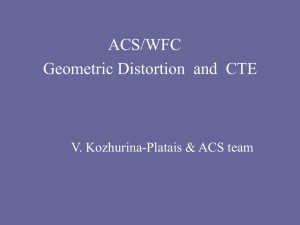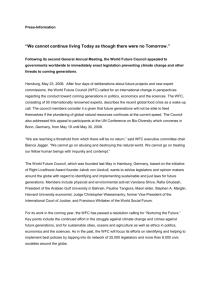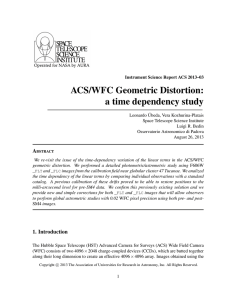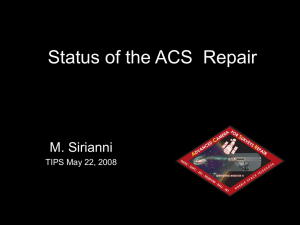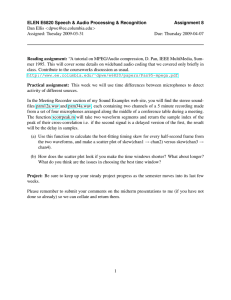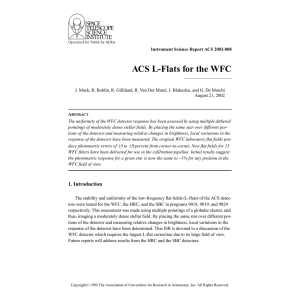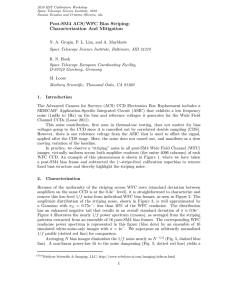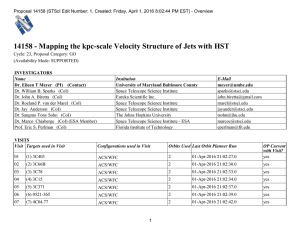ACS Time Dependency Study
advertisement
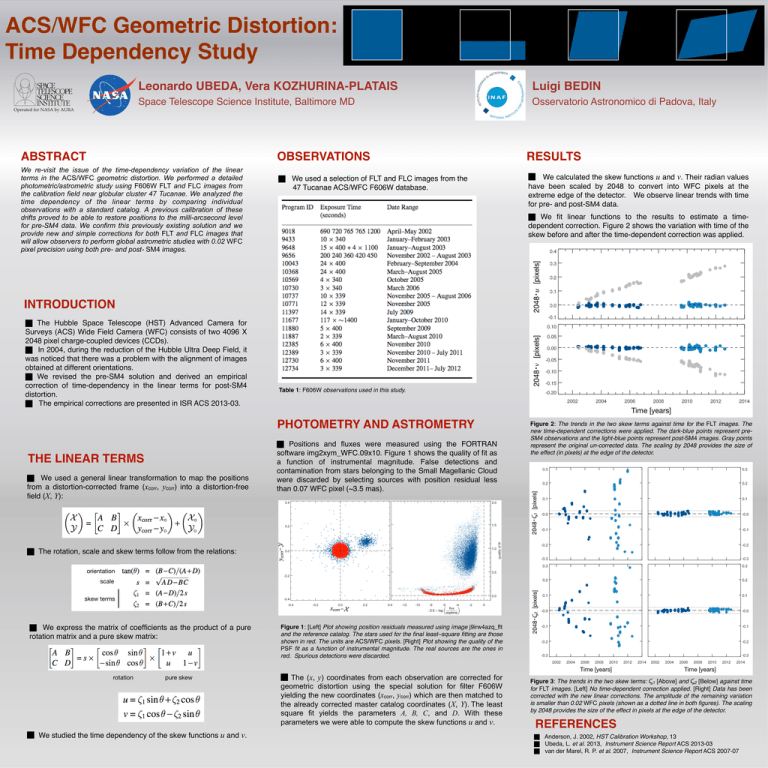
ACS/WFC Geometric Distortion: Time Dependency Study Leonardo UBEDA, Vera KOZHURINA-PLATAIS Luigi BEDIN Space Telescope Science Institute, Baltimore MD Osservatorio Astronomico di Padova, Italy ABSTRACT In the presence of a high electric field, the dark current of a single pixel can be greatly enhanced. These hot pixels accumulate as a function of time on orbit; however, the reduction of the operating temperature of the WFC CCDs has dramatically reduced the dark current of the hot pixels. ACS devices undergo a monthly annealing process which greatly reduces the population of hot pixels and does not affect the normal pixels. OBSERVATIONS We re-visit the issue of the time-dependency variation of the linear terms in the ACS/WFC geometric distortion. We performed a detailed photometric/astrometric study using F606W FLT and FLC images from the calibration field near globular cluster 47 Tucanae. We analyzed the time dependency of the linear terms by comparing individual observations with a standard catalog. A previous calibration of these drifts proved to be able to restore positions to the milli-arcsecond level for pre-SM4 data. We confirm this previously existing solution and we provide new and simple corrections for both FLT and FLC images that will allow observers to perform global astrometric studies with 0.02 WFC pixel precision using both pre- and post- SM4 images. We used a selection of FLT and FLC images from the 47 Tucanae ACS/WFC F606W database. RESULTS We calculated the skew functions u and v. Their radian values have been scaled by 2048 to convert into WFC pixels at the extreme edge of the detector. We observe linear trends with time for pre- and post-SM4 data. We fit linear functions to the results to estimate a timedependent correction. Figure 2 shows the variation with time of the skew before and after the time-dependent correction was applied. INTRODUCTION The Hubble Space Telescope (HST) Advanced Camera for Surveys (ACS) Wide Field Camera (WFC) consists of two 4096 X 2048 pixel charge-coupled devices (CCDs). In 2004, during the reduction of the Hubble Ultra Deep Field, it was noticed that there was a problem with the alignment of images obtained at different orientations. We revised the pre-SM4 solution and derived an empirical correction of time-dependency in the linear terms for post-SM4 distortion. The empirical corrections are presented in ISR ACS 2013-03. Table 1: F606W observations used in this study. PHOTOMETRY AND ASTROMETRY THE LINEAR TERMS We used a general linear transformation to map the positions from a distortion-corrected frame (xcorr, ycorr) into a distortion-free field (X, Y): Positions and fluxes were measured using the FORTRAN software img2xym_WFC.09x10. Figure 1 shows the quality of fit as a function of instrumental magnitude. False detections and contamination from stars belonging to the Small Magellanic Cloud were discarded by selecting sources with position residual less than 0.07 WFC pixel (~3.5 mas). Figure 2: The trends in the two skew terms against time for the FLT images. The new time-dependent corrections were applied. The dark-blue points represent preSM4 observations and the light-blue points represent post-SM4 images. Gray points represent the original un-corrected data. The scaling by 2048 provides the size of the effect (in pixels) at the edge of the detector. The rotation, scale and skew terms follow from the relations: orientation scale skew terms We express the matrix of coefficients as the product of a pure rotation matrix and a pure skew matrix: rotation pure skew We studied the time dependency of the skew functions u and v. Figure 1: [Left] Plot showing position residuals measured using image j9irw4azq_flt and the reference catalog. The stars used for the final least–square fitting are those shown in red. The units are ACS/WFC pixels. [Right] Plot showing the quality of the PSF fit as a function of instrumental magnitude. The real sources are the ones in red. Spurious detections were discarded. The (x, y) coordinates from each observation are corrected for geometric distortion using the special solution for filter F606W yielding the new coordinates (xcorr, ycorr) which are then matched to the already corrected master catalog coordinates (X, Y). The least square fit yields the parameters A, B, C, and D. With these parameters we were able to compute the skew functions u and v. Figure 3: The trends in the two skew terms: Ϛ1 [Above] and Ϛ2 [Below] against time for FLT images. [Left] No time-dependent correction applied. [Right] Data has been corrected with the new linear corrections. The amplitude of the remaining variation is smaller than 0.02 WFC pixels (shown as a dotted line in both figures). The scaling by 2048 provides the size of the effect in pixels at the edge of the detector. REFERENCES Anderson, J. 2002, HST Calibration Workshop, 13 Ubeda, L. et al. 2013, Instrument Science Report ACS 2013-03 van der Marel, R. P. et al. 2007, Instrument Science Report ACS 2007-07
